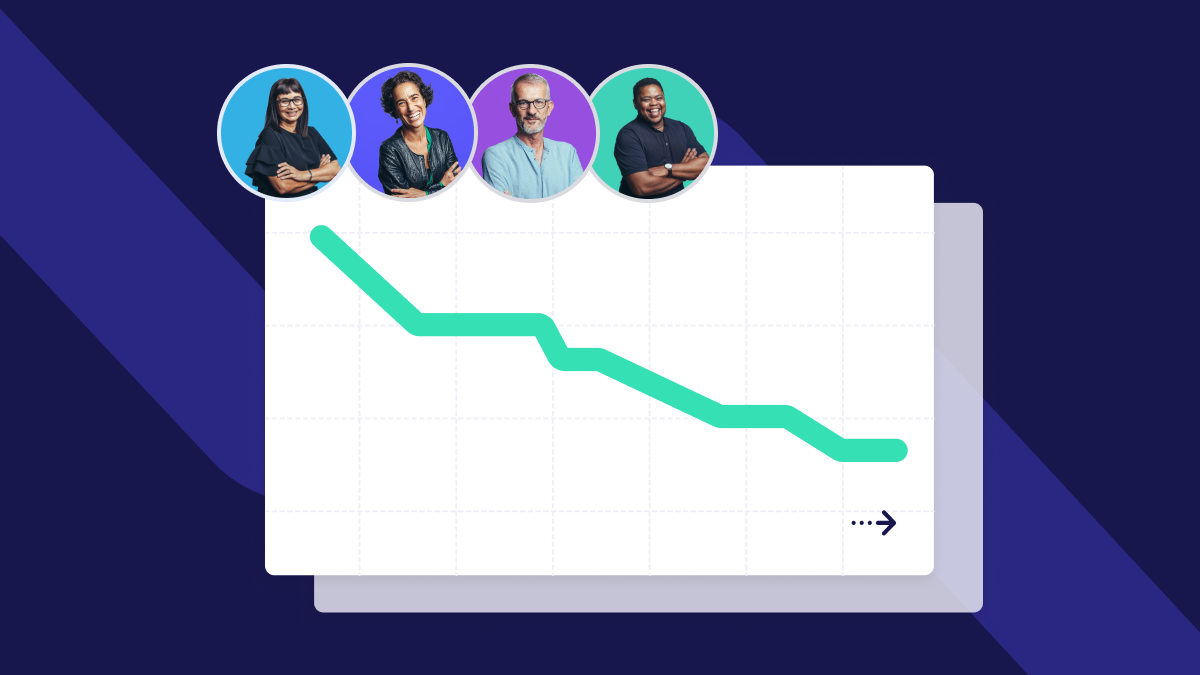How to navigate internal talent mobility through a recession
Jonathan Reyes
5 mins
Dec 26, 2022

How to navigate internal talent mobility through a recession
Blog Post Body
Table of Contents
Talk to a Work Strategist
See the Work Operating System in action and start re-engineering work for AI.
Subscribe to our newsletter
The latest insights on re-engineering work for AI
There are growing fears that the world is on the brink of a recession, with rising inflation levels and market volatility painting a concerning picture. Business leaders and executives have already started shifting their workforce strategies as a response and many more are asking how we can protect our people and reduce loss in these uncertain times.
Employee retention is still a significant problem, with employee turnover costing U.S. businesses $1 trillion every year, and individual replacement costs can pile up.
People teams are well aware of the financial strain this can cause and have prioritized improving retention and loyalty as a result. However, changing market conditions will force HR and talent management leaders to establish more effective internal mobility policies if they hope to keep employees engaged and reduce the overall impact and expense of a reduction in force (RIF).
While no single strategy can ward off the impacts of a recession, understanding internal mobility and talent redeployment can support your organization’s growth and innovation, avoid the need to downsize and retain employees by offering skill development pathways.
It comes down to basic scenario planning, something many of us became adept at in the past three years as we worked to forecast talent needs and to support dispersed workforces throughout a global pandemic.
Increasing cross-functional mobility in your workforce
Mobilizing your workforce means taking stock of all your team members' assets, experience, and skills and utilizing them to their best potential no matter what the situation is.
On a micro level, you can look at this as a manager of a specific team: You identify which team members have specific skills, ensure enough redundancy within the team so that you don’t have one single person responsible for keeping the projects moving, and create cross-training opportunities so that team members can educate one another. This is scenario planning – you need backup if someone is out sick, or on vacation, or if a key team member leaves the company.
Taking this snapshot from team-level to company-level makes it more complicated, but the basics of scenario planning are the same.
In my previous role at Uber (as Global Head of Talent Mobility and Talent Acquisition Operations), the best example I can give is starting in March of 2020. We had a global pandemic beginning to shut down businesses around the world. Uber Rides as a business, obviously, is shutting down. But Uber Eats is growing at an incredible rate. We have a workforce that has just been trimmed down. We went through some layoffs, so we aren’t hiring, but we have this really tactical need to onboard new vendors onto the platform.
So we looked at our workforce and asked: Who's able to do this right? Who's able to help us onboard new customers onto the platform from a sales perspective (and also just from a pure data entry perspective)? So, scoured our internal teams to find out who has adjacency skills from a sales perspective, then looked at the customer support team for Uber Rides and they had the capacity to become data entry.
We built an entirely new business function out of those two things to help each meet their business growth needs. These were hugely successful projects that created a ton of cross-pollination and the percentage of people that went into those projects never actually went back to their former day job.
This is very specific from a macro point of view and unique to Uber’s income streams and workforce, but it shows that if you have visibility into what you need, you can create a match for it. For most companies, that’s not something one person can do on their own – or even a department – without employee adoption and participation.
However, in order to drive and embed career mobility within your organization, you need to not only have some insight into the skill sets your employees have (including those they are not currently using) and your employees need to have access to training and opportunities.
How Reejig can support internal mobility
Aligning your internal jobs and opportunities with the skills you have in your workforce, starts with understanding who your people are and what skills and potential they have.
Reejig solves this by giving you 100% visibility over the skills and potential of your people, through aggregating all the data that sits across your existing HR tech stack (ATS, HRIS, LMS, etc.), enriching that data with publicly available data to create automated skills profiles for everyone in your talent ecosystem.
Reejig gives your talent teams, people leaders and employees access to an Opportunity Marketplace where they can create and discover job and project-based opportunities that align to individual skills, passions, and potential. Through matching and nudging talent to opportunities you can increase engagement, unlock capacity, reduce time to resource projects, and importantly, increase internal mobility.
Results have seen a 232% increase in employee engagement for internal opportunties delivered via the Reejig Nudge Engine.
Talk to a Work Strategist
See the Work Operating System in action and start re-engineering work for AI.
Subscribe to our newsletter
The latest insights on re-engineering work for AI